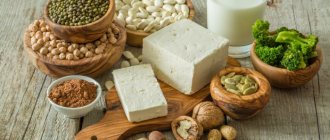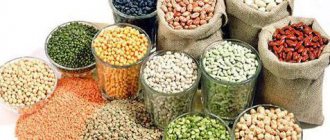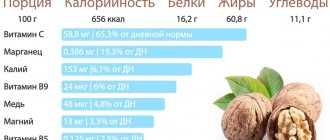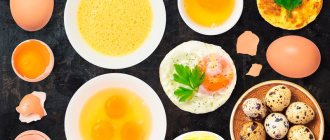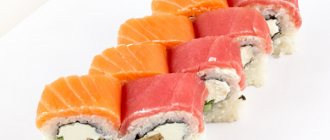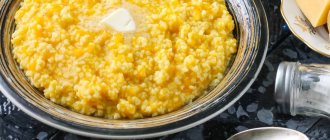Iron deficiency anemia is the most common disease caused by a lack of microelements.
Children and women of childbearing age are most susceptible to it. This type of anemia develops due to a lack of iron in the diet, after severe blood loss, or as a consequence of vitamin C deficiency. There are other types of anemia, for example, megaloblastic, caused by insufficient intake of vitamin B12 and folic acid.
The main task of iron in the body is to participate in the formation of hemoglobin, which concentrates approximately two-thirds of all Fe and carries out gas exchange. Another quarter of iron reserves is stored in the protein ferritin and about 5% in other proteins.
Benefits for the body
Iron obtained from food supplies a number of processes in the human body. Given the special significance of the substance, it is worth dwelling on its functions in more detail.
Hemoglobin formation
Content:
- Benefits for the body
- Why is deficiency dangerous?
- Factors contributing to the development of iron deficiency
- Combination with other nutrients
- The body's needs for iron
- Products containing ferrum
- How to preserve iron in food
- Iron absorption
This ability is one of the main functions of the ferrum. A person constantly needs continuously functioning hemoglobin, especially against the background of blood loss as a result of even minor external or internal bleeding, which reduces its level.
Women in particular regularly experience significant blood loss, making them more susceptible to anemia than men. The problem manifests itself especially clearly with an incorrect, unbalanced diet.
In addition, it is the iron in hemoglobin that transports oxygen throughout all cells of the body.
For muscle formation
In muscle tissue, iron plays the role of an oxygen supplier, without which the process of muscle contraction is impossible. If the muscles do not contract and relax, movement will become impossible.
Ferrum determines muscle tone and elasticity, and weakness is a typical symptom of iron deficiency.
For the brain
The ability to transport oxygen throughout the body makes iron an essential trace element for proper brain function. Fe deficiency increases the risk of developing Alzheimer's disease, dementia and other diseases caused by brain disorders.
Restless legs syndrome
Most researchers agree that the cause of the development of this sensorimotor disease in some cases is insufficient iron intake. Deficiency causes muscle spasms, which intensify during periods of rest (sleep, sitting).
Maintaining a Healthy Body Temperature
Interestingly, iron has the ability to regulate body temperature. And the adequacy of enzymatic and metabolic processes depends on its stability.
To maintain well-being
Eliminates chronic fatigue in men and women, which is also a consequence of low hemoglobin.
Strengthening the immune system
Ferrum plays a key role in the functioning of the immune system. The body, saturated with iron in sufficient quantities, is able to more actively fight infectious diseases. In addition, the speed of wound healing depends on iron.
Healthy pregnancy
During pregnancy, the female body experiences a need for increased volumes of blood and red blood cells (to supply the growing fetus). Therefore, the need for connection in pregnant women increases. Iron deficiency increases the risk of premature birth, provokes underweight in the newborn and disturbances in its development.
In addition, iron can influence energy metabolism, enzymatic activity, relieve insomnia, and increase concentration.
Stages of iron deficiency
Prelatent iron deficiency: iron stores are depleted.
In the tests we will see: ferritin is reduced, other indicators are still normal. The clinic (complaints) may be absent.
Latent iron deficiency : tissue enzyme activity decreases.
Symptoms: perversion of taste, craving for hot, salty, spicy foods, muscle weakness, dystrophic changes in the skin and appendages, etc.
Analyzes: low ferritin + decrease in Fe reserves in serum and in carrier proteins (transferrin, hemoglobin), decrease in iron saturation of transferrin (<20%).
Iron deficiency anemia: it can be hidden (usually initial) and obvious (later stage). With latent (latent) iron deficiency anemia, the clinical picture includes: general weakness, malaise, decreased performance (+ there may be everything that is characteristic of latent iron deficiency), as well as dryness and tingling of the tongue, difficulty swallowing with a sensation of a foreign body in the throat (Plummer-Vinson syndrome ), palpitations, shortness of breath, drowsiness, difficulty concentrating, headaches, fatigue, dizziness.
Symptoms of iron deficiency anemia
With iron deficiency anemia, the condition of the skin, hair and nails worsens, and burning and itching of the vulva may occur. There may be a red and flattened tongue, atrophy of the taste buds, and “jams” in the corners of the mouth. The skin is pale, sometimes with a greenish tint, with an easy blush on the cheeks, dry, flabby, flaky, sometimes with cracks. The nails are thin, flat and matte, have striations, easily peel and break. The hair is dry and brittle, without shine, graying, thinning and turning gray (early than expected). A decrease in immunity is also often observed.
The tests will include: a decrease in hemoglobin and red blood cells, a change in the morphology of red blood cells (reduced size of red blood cells, decreased hemoglobin in a red blood cell, etc.), low ferritin and serum iron, increased life-saving resistance and a decrease in transferrin saturation with iron.
To make a clear diagnosis, it is better to consult a specialist, because... additional differential diagnosis is needed with other types of hypochromic anemia (for example, iron redistribution or iron-saturated anemia).
Why is deficiency dangerous?
Anemia is usually the result of Fe deficiency. The main symptoms of iron deficiency:
- fast fatiguability;
- muscle weakness;
- shortness of breath with slight exertion;
- perversion of taste;
- heavy menstrual bleeding in women (can be considered both a symptom and a cause at the same time).
As already noted, women are more susceptible to developing iron deficiency. Almost 10% of the fairer sex of childbearing age suffer from a lack of this microelement. But in men (and in women after menopause), ferrum deficiency anemia is less common. Children are also at risk of developing pathology.
Factors contributing to the development of iron deficiency
The most common reasons:
- Increased blood loss (including from donors) increases the body's need for iron.
- Strength and endurance exercises require nearly doubling your daily ferrum intake.
- Mental activity contributes to faster consumption of iron reserves.
- Diseases of the gastrointestinal tract, gastritis with low acidity, autoimmune intestinal diseases can cause poor iron absorption.
Combination with other nutrients
Vitamin C. Consuming ascorbic acid along with iron-containing foods promotes increased absorption of iron. For example, if you add half a grapefruit to your Fe diet, your body will absorb three times more iron. Therefore, it is important that the menu is enriched not only with iron, but also with vitamin C. However, it is worth paying attention: ascorbic acid has a stronger effect on the absorption of iron from plants than on the absorption of ferrum of animal origin.
Vitamin A: Retinol deficiency blocks the body's ability to use iron stores to form red blood cells.
Copper. This microelement is known to be necessary for the transport of useful substances from storage sites to cells and organs. With a lack of copper, iron loses its ability to move, which results in the development of anemia. Would you like to replenish your ferrum and copper reserves at the same time? Beans, soybeans and lentils should appear regularly on your table.
It is also important to combine foods rich in iron with foods containing B vitamins (thanks to ferrum, B-substances acquire increased chemical activity).
Many food components can inhibit (weaken) the absorption of iron by binding it in the gastrointestinal tract. A number of such components are found in whole grains and black tea. However, studies have shown that it is difficult for a healthy person to be harmed by these substances. But in people with existing disorders of iron absorption or with developed anemia, absorption deteriorates even more.
It is also important to know that calcium almost completely blocks the absorption of iron. Hence the recommendation: for normal absorption of ferrum, consume iron-containing foods separately from dairy foods and other foods rich in calcium.
What vegetables contain iron?
Don't know which fruits or vegetables have more iron? We will help you figure it out. If we are talking about vegetables, then it is worth paying attention to their leafy species, which have a characteristic dark green growth. Such plants include the following vegetables:
- spinach (contains 3.6 mg iron);
- cauliflower (up to 1.4 mg);
- Chinese and Brussels sprouts (contains 1.3 mg);
- chard (3.1 mg);
- broccoli (1.2 mg);
- parsley (5.8 mg);
- celery (1.3 mg);
- turnip tops (1.1 mg).
Interestingly, sauerkraut also contains up to 1.7 mg of iron. This necessary chemical element is also found in fried potatoes (1.2 mg). But if you cook it, the Fe content will decrease and amount to 0.8 mg. Among leafy vegetables, parsley is the leader, and among other representatives of this family is sauerkraut.
The body's needs for iron
The daily iron requirement for adults ranges from 10-30 mg.
Nutritionists call a serving of Fe of 45 mg the acceptable upper limit. At the same time, the daily norm for women is slightly higher than for men. This is explained by physiological processes: from 10 to 40 mg of iron are lost monthly with menstrual blood. With age, the female body's need for ferrum decreases.
In healthy people, iron overdose is almost never observed. People with hemochromatosis (a genetic disorder in which the percentage of iron absorption from food is 3-4 times higher than in healthy people) are at high risk of poisoning. Excessive accumulation of ferrum in the body can activate free radicals (damage liver, heart, pancreas cells, increasing the risk of cancer).
What to consider if you need to raise your iron levels
Important points:
- The accumulation of ferritin in the depot is not a story for 1 month (in the case of tablets, with intravenous administration, it’s faster, but this is a purely stationary story!). The timing, as always, varies from person to person, but usually it is from 3 to 6 months, or even more.
- Our goal is not only to increase hemoglobin to normal, but to have an optimal supply of ferritin (the figure should be at least equal to your weight).
- Do not take tests during menstruation (blood loss will distort the results).
- Also, it is recommended to go 5-7 days without iron supplements if you take the test again during correction.
- It is worthwhile to space out the intake of Fe mono-preparations and calcium, magnesium, PPI, antibiotics, hormones mono-preparations as much as possible (at least 3-4 hours), so that they do not interfere with each other.
- Not all drugs may be well tolerated. Firstly, because of the dose (the higher, the greater the risk of side effects such as nausea, etc.), and secondly, because of the form. Thus, ferrous sulfate is less well tolerated than chelated forms. In some cases, intravenous replenishment will be required, this is only in a hospital and under the supervision of doctors, no amateur activities!
- While taking an iron supplement, chronic gastrointestinal problems may worsen - be sure to inform the doctor/specialist you are working with about this so that you can change your tactics.
- Optimize the absorption of the iron supplement (do not mix it with milk, caffeinated drinks, etc.).
PS: If you need individual advice, more details can be found here.
Did you like the article? I would be grateful if you share it on social media. networks with your friends.
Products containing ferrum
There are 2 types of iron in food: heme and non-heme. The first option is ferrum, which is part of hemoglobin. Its sources are all foods of animal origin and seafood. Heme iron is absorbed faster and easier by the body. Non-heme iron is an element obtained from plant foods. It is used only partially for the formation of hemoglobin, and then only in combination with vitamin C.
To achieve maximum benefits, nutritionists recommend combining foods of animal and plant origin. In this way it is easy to increase the absorption of ferrum (sometimes up to 400%).
Many people know that meat, especially red meat, as well as offal, are the best sources of iron.
Plant foods can also provide enough iron. True, for this it is important to eat a wide variety of foods of non-animal origin.
Research partially debunks the theory that plants cannot provide enough iron to humans. Many vegetarian foods contain iron in amounts greater than 10% of the daily value, and a serving of spinach or lentils will provide a third of the daily value.
Plant foods contain fewer calories and fats, so they are ideal for people watching their figure and health. But, besides this, adherents of vegetarianism do not deny that the recommended daily intake of iron obtained exclusively from plant foods should be approximately one and a half times higher than that of meat eaters.
Among plant foods, the best sources of iron are legumes and green leafy vegetables. Whole grains also have good nutritional properties and good reserves of ferrum. And the most unexpected source of iron for many is sugar cane molasses. Just 1 teaspoon of this product contains almost 1 milligram of iron. This figure is significantly higher than that of other sweeteners such as honey, maple syrup, and brown sugar.
To make it easier to understand which foods are most saturated with iron, we offer a table.
Using this knowledge, it is easy to avoid iron deficiency anemia. Best Sources of Heme Iron
| The product's name | Quantity | Iron content (mg) |
| Pork liver | 200 g | 61,4 |
| Beef liver | 200 g | 14 |
| Beef kidneys | 200 g | 14 |
| Mussels | 200 g | 13,6 |
| Oysters | 200 g | 12 |
| Heart | 200 g | 12,6 |
| Rabbit meat | 200 g | 9 |
| Turkey | 200 g | 8 |
| Mutton | 200 g | 6,2 |
| Chicken | 200 g | 5 |
| Mackerel | 200 g | 5 |
| Ground beef (lean) | 200 g | 4 |
| Herring | 200 g | 2 |
| Chicken egg | 1 piece | 1 |
| Quail eggs | 1 piece | 0,32 |
| Black caviar | 10 g | 0,25 |
Best Sources of Non-Heme Iron
| The product's name | Quantity | Iron content (mg) |
| Peanut | 200 g | 120 |
| Soybeans | 200 g | 10,4 |
| Beans (lima) | 200 g | 8,89 |
| Potato | 200 g | 8,3 |
| White beans | 200 g | 6,93 |
| Beans | 200 g | 6,61 |
| Lentils | 200 g | 6,59 |
| Spinach | 200 g | 6,43 |
| Beetroot (tops) | 200 g | 5,4 |
| Sesame | 0.25 cups | 5,24 |
| Chickpeas | 200 g | 4,74 |
| Romaine lettuce | 200 g | 4,2 |
| Chard | 200 g | 3,96 |
| Asparagus | 200 g | 3,4 |
| Brussels sprouts | 200 g | 3,2 |
| Pumpkin seeds | 0.25 cups | 2,84 |
| Caraway | 2 tsp | 2,79 |
| Beet | 200 g | 2,68 |
| Turnip | 200 g | 2,3 |
| Leek | 200 g | 2,28 |
| White cabbage | 200 g | 2,2 |
| Green pea | 200 g | 2,12 |
| Broccoli | 200 g | 2,1 |
| Olives | 200 g | 2,1 |
| Zucchini | 200 g | 1,3 |
| Tomatoes | 200 g | 0,9 |
| Parsley | 10 g | 0,5 |
| Chilli | 10 mg | 1,14 |
| Oregano | 2 tsp | 0,74 |
| Basil | 10 g | 0,31 |
| Black pepper | 2 tsp | 0,56 |
List of nuts high in iron
Nuts contain varying amounts of iron. The edible kernels of various varieties of such fruits are actively used in cooking, especially as various creams and additives to chocolate products.
But such fruits are not just tasty, but also very healthy. Therefore, even qualified medical specialists recommend consuming a handful of nuts every day.
The presence of iron in the kernels makes them indispensable for vegetarians and people who fast. Nuts must be present in the daily menu of people who engage in mental or heavy physical activity. In case of blood loss, the nuclei will help quickly restore the composition of the blood.
Pistachios are the record holders for iron content. A 100-gram dose of such products contains 60 g of iron.
The second place is occupied by the pine nut, although it is called a nut only conditionally, due to its external similarity to nut fruits. And, in fact, these are cedar pine seeds. These varieties contain 5.5 mg of organic iron.
Although peanuts, according to the canons of biological science, are not a nut, they belong to a variety of legumes, but due to the external similarity of the fruits we associate them with nuts. It contains 5 mg of iron.
Cashews and almonds contain 4 mg of organic iron.
And the well-known and popular walnut among us is 2 mg.
In order to saturate the body with the necessary trace elements using such fruits, you need to know some more nuances. The fact is that some foods interfere with the full absorption of iron. People suffering from iron deficiency anemia should take this fact into account and plan their menu correctly.
Thus, the absorption of iron and, accordingly, the increase in hemoglobin is prevented by:
- Milk and all dairy products. They contain calcium, which is valuable for the human body, but it is this that prevents the absorption of iron.
- Coffee and tea. These drinks contain tannins in abundance, which also interfere with the absorption of iron by the body.
- Fats, which contain a fairly large amount of vitamin E, will also cause iron to “fly through” in transit and not stay in the body.
How to preserve iron in food
Among the advantages of iron contained in food of animal origin is high heat resistance. But plant ferrum does not tolerate mechanical processing or cooking. An example is whole grains, which lose almost three-quarters of their Fe reserves during processing into flour.
If we talk about cooking, then in this case the iron from the product does not evaporate - it partially passes into the water in which the vegetable was cooked. It is also important to know a few tricks that will help preserve iron in your dishes.
1. It is possible to minimize losses by reducing the cooking time and using as little water as possible. Example: spinach boiled for 3 minutes in a large saucepan loses almost 90% of its iron.
Best materials of the month
- Coronaviruses: SARS-CoV-2 (COVID-19)
- Antibiotics for the prevention and treatment of COVID-19: how effective are they?
- The most common "office" diseases
- Does vodka kill coronavirus?
- How to stay alive on our roads?
2. Cast iron cookware can add extra iron to foods. These portions can be very small - from 1 to 2 milligrams, but the reality of such a process has already been proven. Moreover, experiments have shown that acidic foods more intensively absorb ferrum from such containers.
What fruits and berries contain iron?
Among the berries containing Fe, perhaps, blueberries can be distinguished. It contains a surprisingly large amount of the above-mentioned element (up to 7 mg). There is less of it in black currants - 5.2 mg, in raspberries - up to 1.7 mg. If we talk about fruits, peaches contain 4.1 mg, apples – 2.2 mg, and bananas – 0.8 mg.
As you can see, answering the question of which fruit has the most iron, you can safely choose fresh and juicy peaches. In addition, it is useful to eat not only fresh fruits, but also drink juices, compotes and fruit drinks made from them. Thus, plum juice is considered the most representative among its fellows. One glass of this thick and sour drink will deliver at least 2.9 mg of iron to your body. Pomegranate juice contains slightly less Fe – 0.1 mg.
